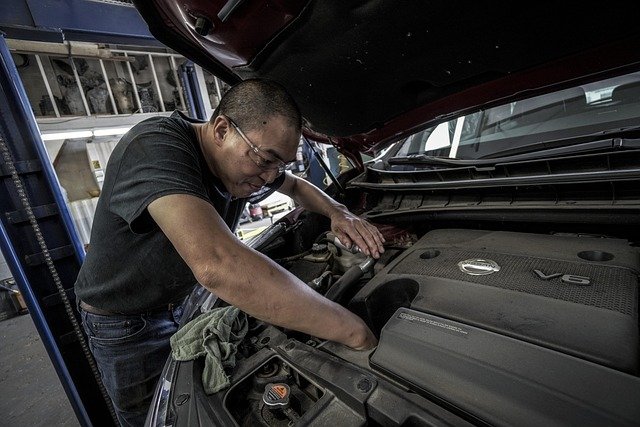Launch an Automotive Mechanic Career Today
Automotive mechanic training builds practical skills and technical knowledge to diagnose, repair, and maintain modern vehicles. Whether you want a stable trade, opportunities in EV and hybrid systems, or to run your own shop, the right program, ASE and manufacturer certifications, plus hands-on experience and apprenticeships, will accelerate your career. Learn about program lengths, costs, accreditation, and career paths to decide your best route into automotive service and repair.

Getting started in automotive repair means combining practical shop experience with technical learning. Modern training programs teach you how to troubleshoot engines, brakes, electronics, and increasingly complex hybrid and electric drivetrains. With the right program, certifications, and on-the-job exposure, you can build a dependable career that leads to senior technician roles, service management, or your own shop.
How long training programs usually take
Program length depends on the credential and how deep you want to go. Short certificate courses concentrate on core diagnostic and repair skills and often finish in six months to a year. Associate degree programs in automotive technology generally run about two years, adding broader theory, coursework in electronics, and general education. Four-year bachelor programs or engineering degrees take around four years and are geared toward advanced technical positions, management, product development, or research roles in the automotive industry.
Apprenticeships and employer-sponsored pathways are timelines driven by competency rather than semesters. These let you learn while working and often include progressive pay increases as you meet skill benchmarks.
What to look for when choosing a program
Selecting the right school affects how well prepared you will be for today’s vehicles. Key factors to evaluate:
- Accreditation: Choose programs approved by recognized bodies such as the National Automotive Technicians Education Foundation (NATEF). Accreditation confirms the curriculum and shop facilities follow industry standards.
- Hands-on experience: A strong balance of classroom instruction and practical lab time with real vehicles and modern diagnostic tools is essential.
- Instructor background: Instructors with current industry experience and relevant certifications provide practical insight and up-to-date techniques.
- Facilities and equipment: Programs that provide access to scan tools, oscilloscopes, EV charging stations, and ADAS calibration setups will better prepare you for the field.
- Employer relationships and placement: Schools offering internships, co-ops, or direct hiring networks increase your chances of employment after training.
Apprenticeships and employer-funded training can be particularly valuable because they combine real-world experience with income and often lead directly to jobs.
Certifications that matter
Certifications demonstrate verified competence and can improve hiring prospects and pay. The National Institute for Automotive Service Excellence (ASE) is a widely respected credential; ASE exams cover areas like engine repair, brakes, electrical systems, transmissions, and specialty topics. Many employers prefer or require ASE-certified technicians because these credentials signal reliable, tested skills.
Manufacturer-specific certifications are also important if you want to work at dealerships or specialize in certain makes. As vehicles shift toward electrification, certificates for hybrid and EV systems, high-voltage safety, battery diagnostics, and ADAS calibration are increasingly valuable.
Typical costs and planning for expenses
Costs vary by program type and institution. Below is an illustrative range to help with planning. Check with schools for exact pricing and available financial aid.
| Program type | Typical cost range |
|---|---|
| Certificate (community college or technical school) | $5,000 – $10,000 |
| Associate degree (community college/technical school) | $10,000 – $25,000 |
| Bachelor’s degree (university) | $30,000 – $100,000+ |
| Apprenticeship / employer-sponsored | Minimal student expense; often paid while learning |
These figures are estimates and can vary by location, institution, and residency status. Many schools offer financial aid, scholarships, payment plans, and tuition reimbursement options.
Career opportunities after training
Graduates can find work in many settings: independent repair shops, franchised dealerships, fleet service centers, collision repair shops, and specialty shops focused on diesel, transmissions, or EV systems. Specializing can make you more marketable; high-demand areas include EV/hybrid drivetrains, battery system diagnostics, ADAS, and automotive electronics.
With experience, technicians often move into lead technician or master tech positions, service management, technical training roles, estimator positions in collision centers, or shop ownership. Some also transition into roles with manufacturers or in automotive product development and testing.
Final advice and long-term outlook
Automotive repair is a durable trade that is evolving quickly. Keeping skills current is critical: plan for ongoing education, manufacturer updates, and additional certifications as vehicle technology changes. When evaluating programs, prioritize accredited schools that offer modern shop facilities, instructor experience, and strong employer ties. Obtain ASE and manufacturer credentials, pursue internships or apprenticeships for real-world exposure, and focus on hands-on practice with today’s diagnostic tools.
Ultimately, an investment in quality training combined with certifications and practical experience positions you for steady employment, the potential for higher earnings, and opportunities to advance into leadership or business ownership in the automotive field.






